Dolhalame Wishing Stone (Yeongcheon) (돌할매(영천))
17.9Km 32873 2024-02-23
417 Gwan-ri, Bugan-myeon, Yeongcheon-si, Gyeongsangbuk-do
Dolhalmae Wishing Stone, held in high esteem by locals for centuries, is believed to possess fortune-telling properties. Legend has it that if one attempts to lift the stone with both hands and succeeds, the wish will not materialize; however, if the stone remains immovable, the wish is destined to come true. This oval-shaped stone, measuring 25 centimeters in diameter and weighing approximately 10 kilograms, is the centerpiece of Dolhalmae Park, which also features various sculptures. Nearby, visitors can explore additional attractions such as Manbulsa Temple and Dogyeseowon Confucian Academy.
Odaeyang Mulhoe Sikdang (오대양물회식당)
18.0Km 27706 2024-02-13
28-1 Daesin-ro, Buk-gu, Pohang-si, Gyeongsangbuk-do
054-244-7164
Odaeyang Mulhoe Sikdang, situated in the Pohang Bukbu Market, is a Korean restaurant renowned for its signature dish, Odaeyang Teungmi Mulhoe (cold raw fish soup special). This dish is a traditional Pohang-style gochujang mulhoe, distinguished by its unique blend of noodles, pear, gochujang seasoning, and ice. It offers a light and refreshing flavor even without the soup. Additionally, the restaurant serves delectable bapsikhae (fermented fish and rice) and maeuntang (spicy fish stew), both highly recommended.
Surime (수리뫼 [한국전통음식체험교육원])
18.7Km 22568 2021-01-28
110-32, Poseok-ro, Gyeongju-si, Gyeongsangbuk-do
+82-54-748-2507
Surime is a traditional Korean food experience center owned and operated by Park Mi-suk who studied under Hwang Hye-seong, holder of the Intangible Cultural Property No. 38, Royal Cuisine of the Joseon Dynasty. The institute operates various traditional cooking experience programs open to everyone. The institute shares the walls of the Choi family home, designated as a cultural asset, spanning over 1,652.89 ㎡ with well-preserved hanok structures built over 100 years ago.
Surime (수리뫼)
18.7Km 10130 2019-11-21
110-32, Poseok-ro, Gyeongju-si, Gyeongsangbuk-do
+82-54-748-2507
Surime is surrounded by Gyeongju Namsan Mountain, a designated UNESCO World Cultural Heritage Site. Surime serves royal cuisine from the Joseon dynasty, prepared by royal cuisine expert Park Misuk. All dishes are prepared with fresh ingredients grown in the Surime garden for a pure, natural taste. In addition to being a restaurant, guests can also participate in various food programs.
Yongsan Sashimi Restaurant (용산회식당)
18.8Km 5070 2024-03-04
112 Poseok-ro, Naenam-myeon, Gyeongju-si, Gyeongsangbuk-do
054-748-2119
Situated near Cheollyongsa Temple in Gyeongju, Yongsan Hoe Restaurant is exclusively dedicated to hoedeopbap (raw fish bibimbap). Customers are served a generous portion of hoe (raw fish) over rice in a large brass bowl. The topping's hoe is freshly mixed with the catch of the day, varying seasonally with options like herring, grey mullet, gizzard shad, and plaice, all sourced from Guryongpo Port in Pohang. Due to its popularity, there is often a waiting line, so obtaining a numbered ticket to queue is recommended.
Tomb of King Wonseong (경주 원성왕릉)
18.8Km 12652 2020-04-04
139, Singyeipsil-gil, Gyeongju-si, Gyeongsangbuk-do
+82-54-779-6100
The tomb of the King Wonseong, 38th king of the Silla Kingdom (785-798) in Oedong-eup, Wolseong-gun, Gyeongju is Historic Site No. 26. The tomb is 21.9m in diameter and 7.7m high and is encircled by a stone fence decorated with twelve oriental zodiac images. The area is also home to a number of stone monuments that stand facing each other: Hwapyoseok (marking the border of the tomb), Muninseok (civil servant statue), Muinseok (military officer image statue) and Dolsaja (a stone lion that protects the tomb). Muinseok in particular is a favorite among visitors because of its exotic appearance. The statue is sometimes compared to a strong and charismatic person of Arabic or Persian descendant, much like the merchants who came to Silla in ancient times.
Gwaereung is styled after tombs of the Tang dynasty, but still retains all the characteristics typical of Silla tombs; namely, the stones around the tomb, the 12 oriental zodiac figures, the protective walls, and the decorative stonework.
Manbulsa Temple (Yeongcheon) (만불사(영천))
19.1Km 29516 2024-02-23
857-5 Goji-ri, Bugan-myeon, Yeongcheon-si, Gyeongsangbuk-do
Situated on Manbulsan Mountain in Yeongcheon-si, Manbulsa Temple is renowned for housing the largest collection of Buddha statues in Korea. The temple is also celebrated for actively promoting modern Buddhism, culture, and welfare. Notable features within the temple grounds include the towering 33-meter Yeongcheon Great Amitabha Buddha, the revered five Buddha's jinsin saris and Bodhi trees from Sri Lanka, the resonant Manbul Brass Temple Bell, and the main sanctuary, Manbulbojeon Hall. Nearby attraction include Dogyeseowon Confucian Academy, Dolhalmae Wishing Stone, and Nogye Sibi (Monument Inscribed with a Poem of Pak Inro), offering a rich cultural and historical exploration.
Seated Rock-carved Buddha at Golgulam Temple (경주 골굴암 마애여래좌상)
19.2Km 19106 2022-12-28
101-5, Girim-ro, Gyeongju-si, Gyeongsangbuk-do
+82-54-744-1689
The Seated Rock-carved Buddha at Golgulam Temple consists of a Maebul (a Buddha carved in a cliff) at the very top of 12 Buddha images carved in natural rock caves located in a steep cliff of Girimsa Valley. A painting of the caving titled "Golgulseokgul" by Gyeomjae Jeongseon, a famous painter of the era, revealed that there was once a wooden room located in front of the Maebul, but today only a hint of the room remains on the rock. The head of the Buddha (Yukgye) is perched solid and high on the body with a clear profile of the face – sharp eyes, small lips and a long and narrow nose. In contrast to the three-dimensional face, the body is broader and flatter. The neck and upper chest sections have eroded over time. The folds in the clothing are nearly parallel, and the arm area has a v-pattern wrinkle, giving it a more realistic and three-dimensional quality. Around the head of the Buddha is a lotus-shaped halo, while the body is surrounded by a rhythmic flame-like halo. The Maebul is believed to have been created during the late Unified Silla Kingdom, as it shows similar craftsmanship to Seated Stone Vairocana Buddha (National Treasure), which was created in the year 876 and is located in Chukseosa Temple.
Golgulsa Temple (Gyeongju) (골굴사(경주))
19.2Km 51272 2024-02-27
101-5 Girim-ro, Munmudaewang-myeon, Gyeongju-si, Gyeongsangbuk-do
Golgulsa Temple is a temple located within the Hamwolsan Mountain, situated between Gyeongju City and the East Sea. With a history of over 1,500 years, it houses many Buddha statues preserved within its twelve grottoes. Maintaining the tradition of Korean Buddhism's practice of Seonmudo, visitors can witness Seonmudo performances. Additionally, there are templestay programs available, offering opportunities to experience Korean temple culture.
Pohang Steel Art Festival (포항스틸아트페스티벌)
19.4Km 1763 2024-09-30
Duho-dong, Buk-gu, Pohang-si, Gyeongsangbuk-do
+82-54-289-7853
The Pohang Steel Art Festival blends steel, art and cultural activities to present Pohang's history including the story of POSCO's success in the steel industry. The festival is the country's only steel festival, and encompasses the local culture and philosophy of the Pohang area, while aiming to create an urban landscape through art.
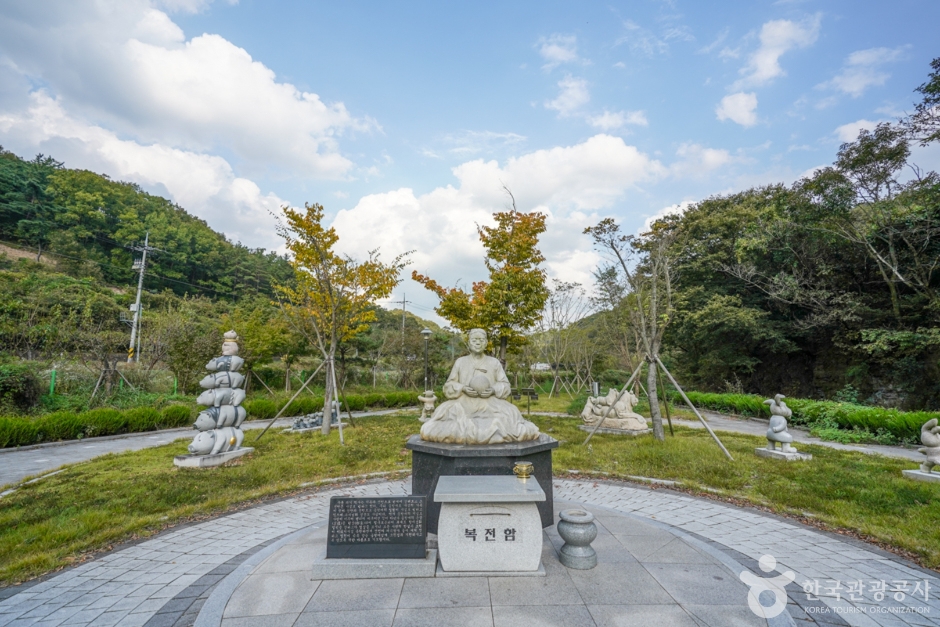

![Surime (수리뫼 [한국전통음식체험교육원])](http://tong.visitkorea.or.kr/cms/resource/98/1967598_image2_1.jpg)
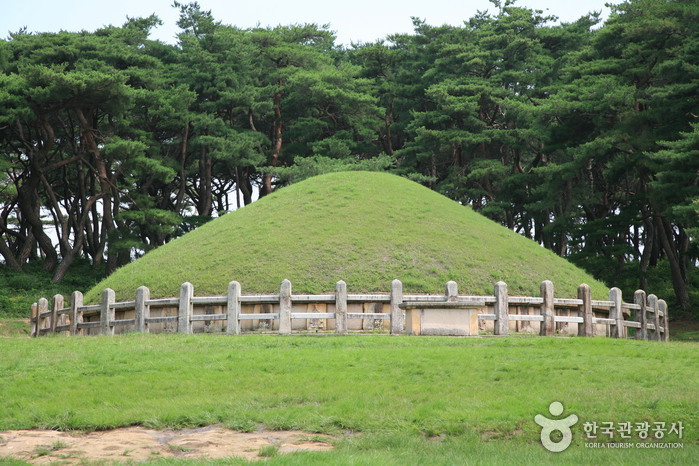
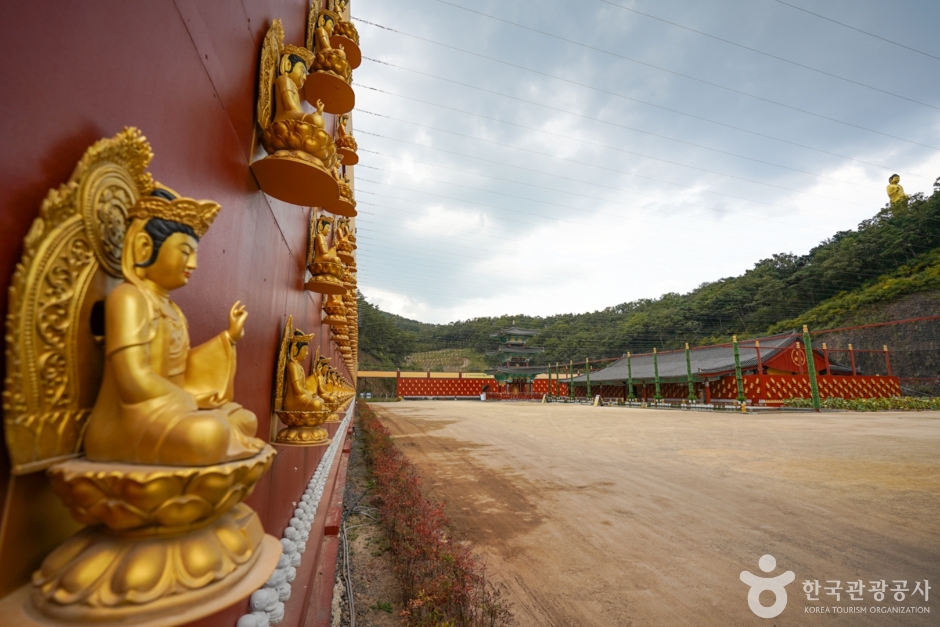
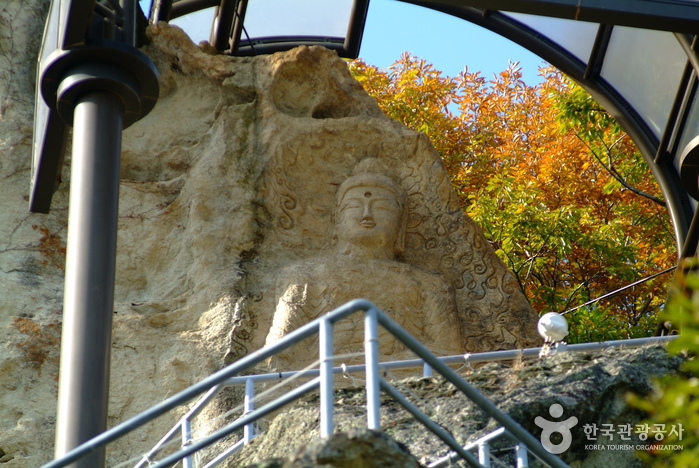
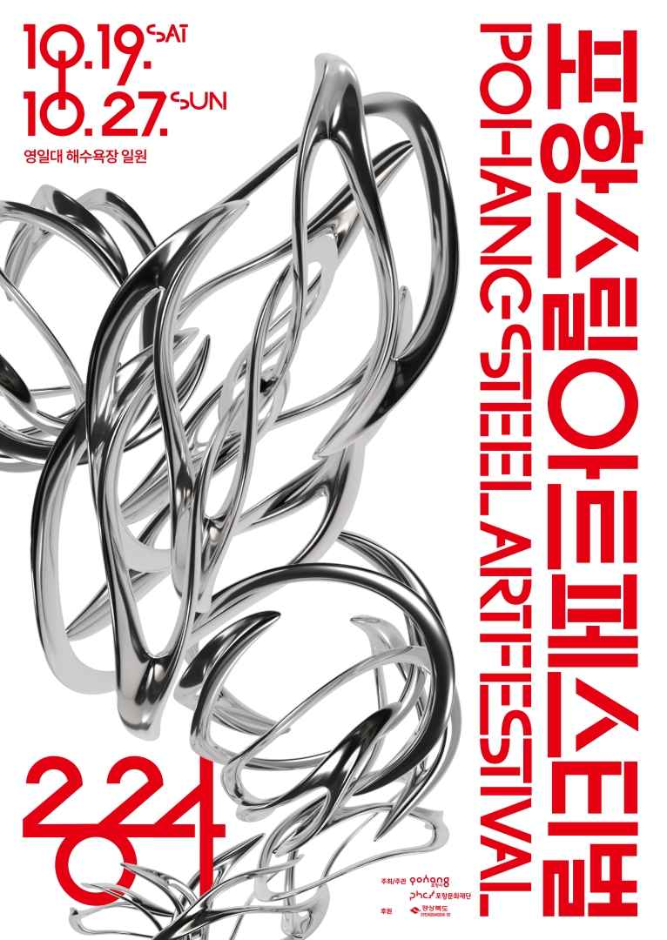
 English
English
 한국어
한국어 日本語
日本語 中文(简体)
中文(简体) Deutsch
Deutsch Français
Français Español
Español Русский
Русский